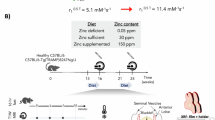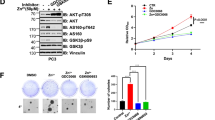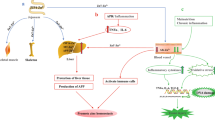Abstract
A HIGH concentration of zinc has been demonstrated in the prostate gland of many animals, especially in the dorso-lateral lobe of the rat1, in human prostate2 and spermatozoa. Because the radioactive isotope of zinc (zinc-65) at present available has a half-life of 250 days, it is unsuitable for studies in man, with the possible exception of cases with advanced malignant disease3.
This is a preview of subscription content, access via your institution
Access options
Subscribe to this journal
Receive 51 print issues and online access
$199.00 per year
only $3.90 per issue
Buy this article
- Purchase on SpringerLink
- Instant access to full article PDF
Prices may be subject to local taxes which are calculated during checkout
Similar content being viewed by others
References
Mawson, C. A., and Fischer, M. I., Nature, 167, 859 (1951).
Mawson, C. A., and Fischer, M. I., Biochem. J., 55, 696 (1953).
Daniel, O., Haddad, F., Prout, G., and Whitmore, W. F., Brit. J. Urol., 28, 271 (1956).
Author information
Authors and Affiliations
Rights and permissions
About this article
Cite this article
TAYLOR, S. Uptake of Radioactive Zinc in vitro by the Prostate. Nature 179, 585 (1957). https://doi.org/10.1038/179585a0
Issue date:
DOI: https://doi.org/10.1038/179585a0



